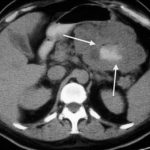 One of the most common early applications of machine learning in healthcare has been in medical imaging. Both IBM and DeepMind have taken this route in their forays into the market, whilst researchers have also made progress in areas such as cancer detection.
One of the most common early applications of machine learning in healthcare has been in medical imaging. Both IBM and DeepMind have taken this route in their forays into the market, whilst researchers have also made progress in areas such as cancer detection.
Further evidence of the progress being made in this area comes via a team from the Fraunhofer Institute for Medical Image Computing MEVIS in Bremen, Germany, who have developed a machine learning algorithm to examine CT and MRI scans for possible tumors.
“Our program package increases confidence during tumor measurement and follow-up,” the team explain. “The software can, for example, determine how the volume of a tumor changes over time and supports the detection of new tumors.”
Tumor detection
Their system utilizes deep learning to segment the images so that experts can then accurately identify organs. It represents a marked improvement on existing methods, as current software is often far from accurate in identifying organs. Correcting these errors can thus be a considerable waste of time for physicians.
The system was trained using CT scans of the liver of 149 patients, with an inevitable improvement the more images the system had access to. Towards the end, it was capable of automatically identifying liver contours with a high degree of accuracy.
The team believe that the approach could also be applied in a number of different areas, including the registration of images. This is where software attempts to align images from various patient visits to allow physicians to compare them alongside one another. The team suggest that machine learning could help this process by locating bone metastases in the torso where ribs, hip bones and spine are visible. These are often overlooked at the moment as it’s a time intensive process, and clinicians often lack this most crucial element.
As such, a combination of machine learning and more traditional approaches could provide considerable improvements to the quality of service that hospitals can offer. It’s an approach that is already entering the market, with a number of applications already existing for lung image registration, so whilst we remain in the early stages of this movement, the early results are there for all to see. It will be fascinating to see just how far it goes.